TENSA®MODULAR LR & LR-LS – Modular expansion joints
Modular Expansion Joints can be constructed for any movements, from about 100 mm up to 2,000 mm and more. They allow movements in all 3 directions and rotations around all 3 axes.
Media
Principle
A number of lamella beams divide the movement range at the end of a bridge deck into individual gaps, permitting easy passage of traffic. They are connected with special sealing profiles to form a water-tight unit.
mageba has been developing modular expansion joints for decades. This experience results in joints which are well-proven, long-lasting, quiet and lowmaintenance.
Advantages
- Movement in any direction and rotation about any axis possible at any time.
- All structural elements of mageba modular expansion joints are made from high quality materials. Production is in accordance with the latest ISO 9001:2000 quality assurance requirements.
- mageba modular expansion joints have been successfully tested for fatigue and wear at independent institutes.
- Weld seams at highly stressed connections are avoided. Therefore, mageba modular expansion joints have high durability.
- Clever design facilitates the exchange of individual parts as necessary without difficulty.
- mageba modular expansion joints have no loose or moving steel components which would be susceptible to damage from frequent load changes. Movement and torsion are facilitated by lubricated PTFE and highgrade stainless steel, and by elastomeric components and plastics.
- The elasticity of the support system absorbs shocks and vibrations and also permits transverse movements. It also allows vertical movements and rotations.
- mageba modular expansion joints have an elastic self-regulating gap control system. This system increases the durability of the whole structure, because it helps to absorb the dynamic loads from the traffic passing over it. Any potential damage to the structure caused by the "blocking" of an individual gap (e.g. by trapped debris) is effectively averted due to the independent elasticity of the steering system.
- Only a relatively small recess space is required for the installation of mageba modular expansion joints on bridges and abutments. The asymmetrical arrangement of the joist beam boxes means that they can be adapted to a wide range of situations on site.
Main characteristics
The type designation is defined by the number of sealing profiles. It follows a modular progression beginning with Type LR2, which has two sealing profiles.
The range of movements is determined by the operational range of the sealing profile. For instance, if the specified operational range of a sealing profile is 80mm, an LR12 Modular Joint will allow a movement range of 12 x 80 = 960mm.
The joint width f changes with movement of the joint.
For the minimum joint width fmin the steel profiles are fully closed. For the maximum joint width fmax the gaps between the steel profiles open to 65, 70 or 80 mm, depending on the (national) specification.
An example of this can be seen in the above table, where the joint width f is displayed according to the corresponding gap widths (f0, f5, f65, f80 ).
Movements
Modular expansion joints allow movement in all 3 directions (ux, uy, zu) and rotations about all 3 axes (f x, f y, f z).
Large movements in the bridge's transverse direction (uy) and vertical direction (zu) of both the lamella beams and the cross beams are made possible due to the consistent elasticity of the support system.
Principle of elasticity
A pre-requisite for ensuring a long lifetime of the modular expansion joint is the avoidance of dynamic stress. Similar to techniques used in the automotive industry, the dynamic stress on mageba modular expansion joints is drastically reduced by the use of a highly developed spring and damping system. The joints and the adjacent structural elements are thus wellprotected, and the durability of the joint is significantly increased.
Skewed movements
Generally, modular expansion joints are installed perpendicular to the bridge axis and the direction of their longitudinal movement is parallel to the bridge axis. However, we can easily manufacture expansion joints that are installed at a certain angle to the bridge axis.
Furthermore, we also manufacture expansion joints for a particular skewed movement, if the movement direction of the bridge (at the expansion joint) is not perpendicular but at a certain angle to the joint axis.

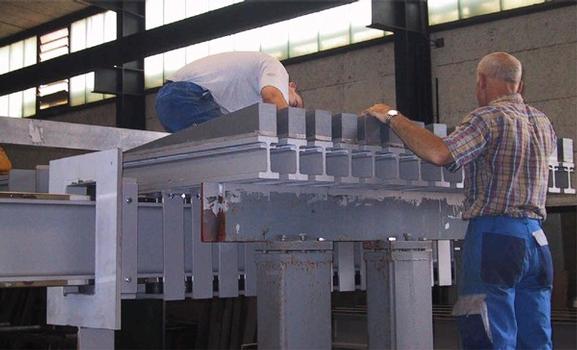
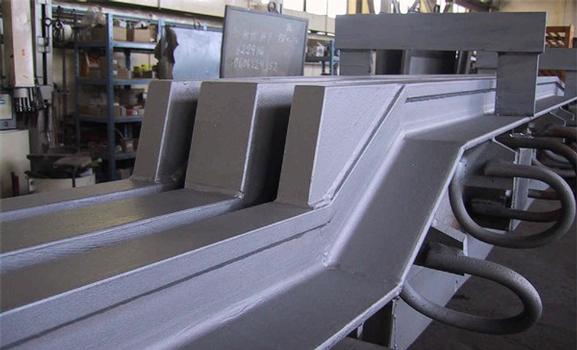
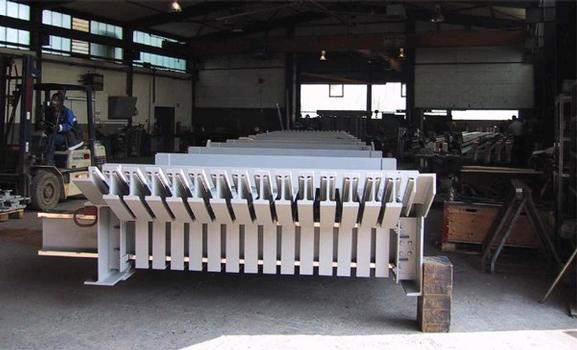

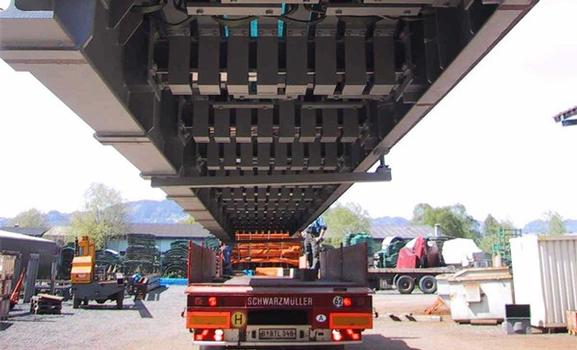
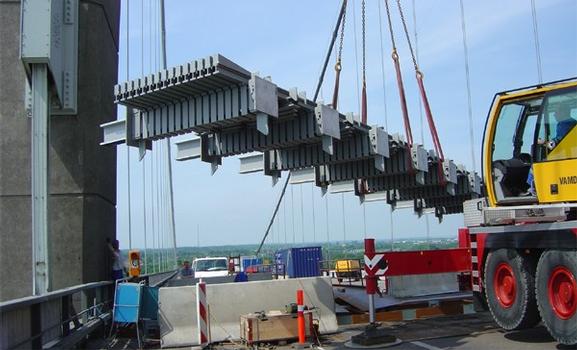
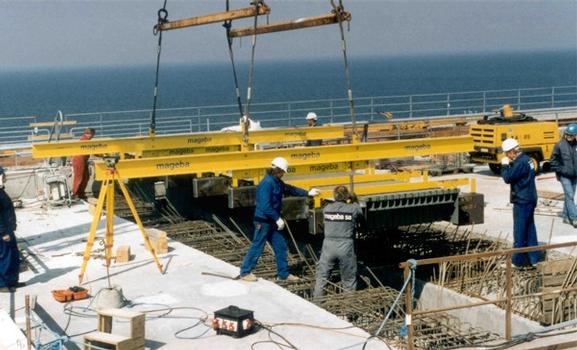
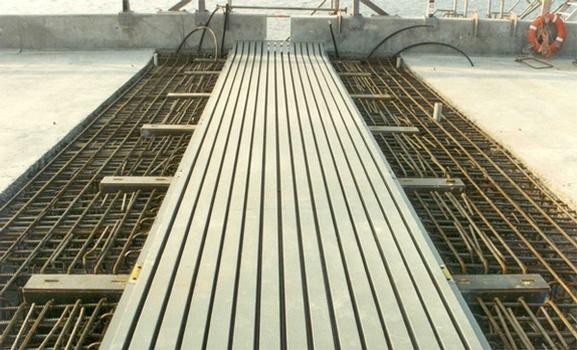
 mageba group
mageba group









